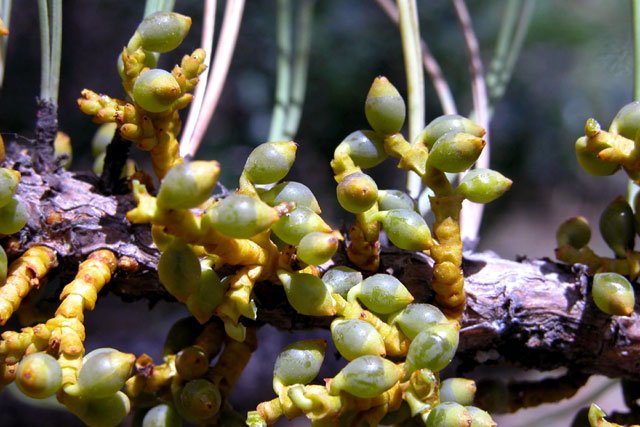‘Tis the Season
‘Tis the season of light, warmth and cheer! One festive tradition during these dark days of winter is the simple kiss under the mistletoe. This tradition originated in Europe with the Norse tale of the death of Baldur, the God of innocence and light by an arrow made of mistletoe. His mother Frigga’s tears restored him to life. Her tears turned the mistletoe’s berries white, and she proclaimed that the mistletoe would no longer cause harm and would instead be a plant of peace and love.
European immigrants brought this kissing tradition to the Americas, with American mistletoe substituting for the original. While there are over 1,300 species of mistletoe worldwide, only two are present in North America. There is the leafy American mistletoe, which is similar to the “kissing” type found in Europe. And here in Grand Teton National Park we have the mostly leafless Dwarf mistletoe – but don’t let that stop you from smooching your sweetheart beneath it.
Mistletoe is hemi-parasitic, and attaches to a variety of tree and shrub species. Its evergreen leaves nourish the plant, and it absorbs additional nutrients and minerals from its host tree. It grows and spreads into the thick mass of twigs known as witches’ broom, and serves as nesting habitat for many bird species and shelter for small mammals. The berries, while poisonous to humans, provide an abundant food source for birds, deer, and porcupines. Seeds spread as birds eat and transport its sticky berries. Seeds are also spread when berries ripen and burst – with a force that can send them as far as 50 feet!
And during the longest, darkest days of winter the mistletoe provides a welcome splash of green against the background of frozen winter white. So strap on your snowshoes or your skis, head out to the forest with your partner, and enjoy a nice endorphine-laced kiss under a mistletoe, and thank it for providing food and shelter to so many of our forest friends!

